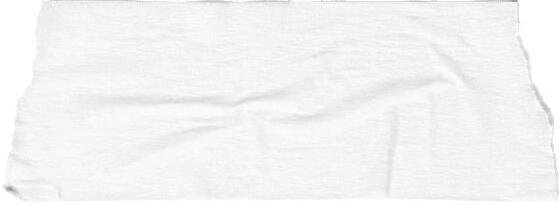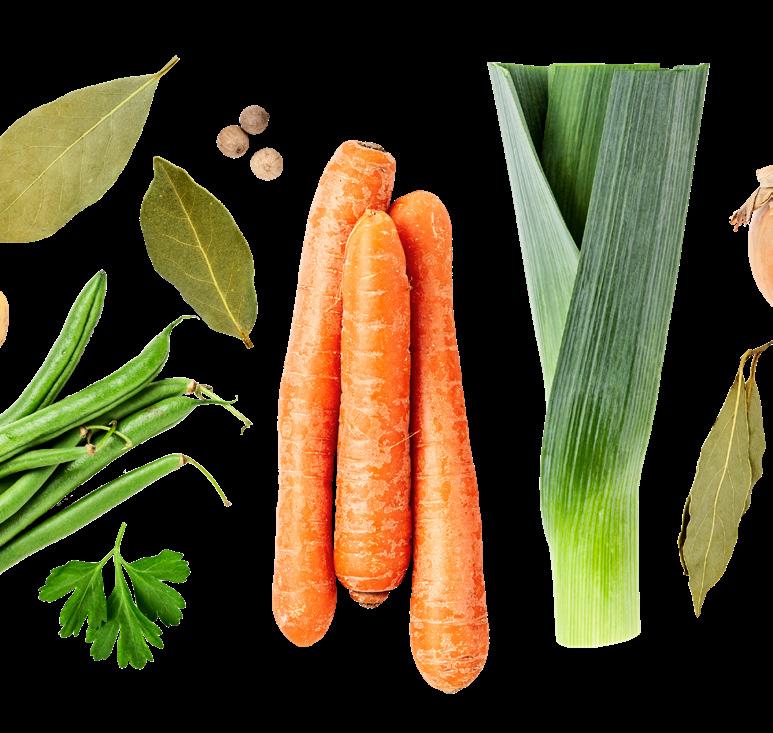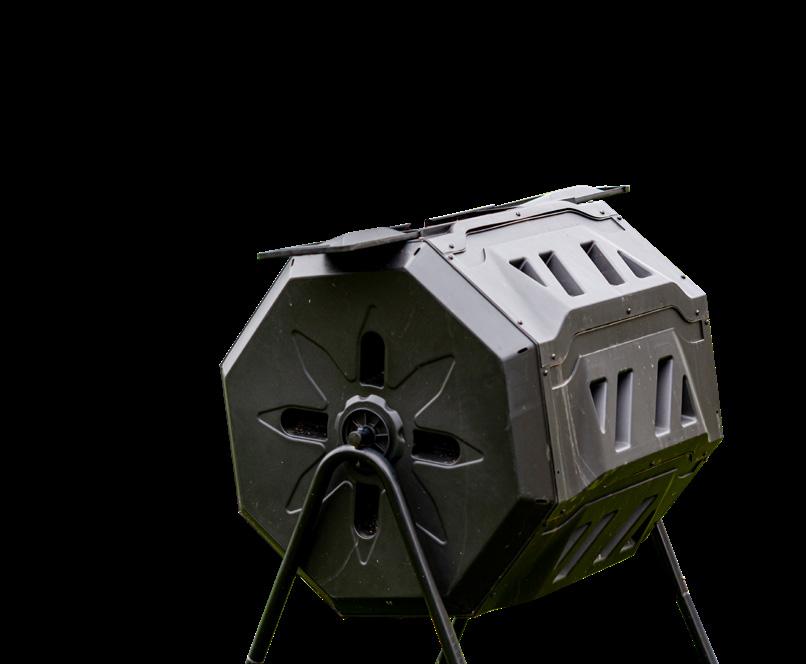

FOOD WASTE AVOIDANCE GUIDE
FOOD WASTE IN AUSTRALIA

Australia throws away more than 7.5 million tonnes of food each year—that is enough edible food to fill the Queensland Country Bank Stadium more than 12 times.













Households across Australia are responsible for more than one-third of all food wasted each year. Waste audits in Townsville have shown that households are throwing away more than 2.5kg of food each week. This amounts to more than 200,000kg each year!
We all have the best intentions when doing our weekly grocery shop to use all the fresh produce we buy. Yet before we know it, by the end of the week, the bag of spinach remains unopened at the bottom of the crisper and our fresh fruit was ignored for a packet of chips instead.
This guide is full of tips to help you avoid food waste—from planning your weekly shop, to storing food properly, and how to put your scraps to good use.




THE REAL COST OF FOOD WASTE
Foodwasteisa$19billionproblem forAustralianhouseholds.
Theaveragehouseholdthrows away1in5shoppingbags offood—costinghouseholds upto$2,500eachyear.

Bread, fruit, vegetables, meat, and poultry are the most commonly wasted foods in our homes.
Nearly two-thirds of household food waste could have been avoided if it had been eaten in time or stored properly—with only one-third of food waste being the inedible parts of food like eggshells and banana peels.
Being more conscious of the food we’re throwing away could lead to big savings for households.
ENVIRONMENTAL
IMPACT
When food waste ends up in our landfill, it decomposes without oxygen or microbes, and produces methane, a greenhouse gas that is 28x worse than carbon dioxide and contributes to climate change. It’s not just emissions that are a negative impact of throwing food away. When we throw away a mango—we’re also throwing away all the resources that went in to getting that piece of fruit into your fruit bowl at home. Think of all the land, water and fertiliser needed to grow the mango tree, the labour to pick and process the fruit, the fuel to transport them from the farm to the processors, to the supermarkets, to your home, and finally, to your bin.

Reducing food waste sent to landfill could reduce Australia’s greenhouse gas emissions by more than 3%.




REDUCE YOUR FOOD WASTE HOW YOU CAN

Food waste in your home is influenced by a range of factors—from household size and composition, to work schedules, and social events. Because of all these factors, it’s hard to know exactly where your household should begin when it comes to reducing your food waste.
Start with one of these simple steps—tackle the one that will reduce the most amount of food waste in your household first:
• Identify the most wasted foods in your home e.g. fruit, vegetables, meat, forgotten leftovers, and focus on reducing this wastage.
• Plan your meals.
• Prepare the right amount of food.
• Eat oldest food items first.



PLAN YOUR WEEK
One way we can all reduce the food waste we generate is by planning the week ahead.
• Plan your weekly meals, including a night dedicated to leftovers or eating out.
• Prepare the right amount of food.
• Store your food correctly.

BEFORE YOU SHOP
Make a list—look in your fridge, freezer and pantry to see what you already have.


HOW TO USE YOUR FRIDGE
Food turning bad suspiciously quick? Maybe your fridge isn’t being used optimally!
Fridges run most efficiently at temperatures between 4°C and 6°C. Too cold and your produce could frost, reducing its taste and quality, and if set too high, you can increase the risk of food poisoning.
The shelf you use to store food on can also make a big difference to the lifespan of your fresh fruits and vegetables.

TOP SHELF
The top shelf of your fridge is typically the warmest. This shelf is great for packaged foods, leftovers, cooked meats, and prepared salads.
You can use OzHarvest’s USE IT UP tape on this shelf to encourage things to be used from this shelf first.

MIDDLE SHELF
Cheeses, butter, cream, yoghurts, desserts and eggs.
BOTTOM SHELF
Raw meat, poultry, and fish are best stored on the bottom shelf to reduce cross contamination. Condiments are also best stored here.
CRISPER DRAWERS
All your fruit, vegetables, leafy greens and herbs


The shelves in your fridge doors are best for drinks and things that don’t easily expire.

BEST BEFORE VS USE BY

Date labels can be confusing and storage advice is often inconsistent and unclear.

USE BY date is the date food must be consumed by for health and safety reasons. Food with a use by date cannot be sold past this date and is typically used for perishable items such as milks, yoghurts and packaged meals.
BESTBEFOREdateisasuggestion bythemanufacturerofwhenthe foodisatitsbestquality—the healthandsafetyoffoodswith abestbeforedatewillnotbe compromisedifenjoyedbeyond thebestbeforedate.
Biscuits,tinnedfoods,anddried pastawilltypicallyhaveabest beforedate—buttheycanstill beenjoyedafterthisdate.
Ifyou’reeveruncertain— rememberyoucanalwaysuseyour sight,tasteandsmelltocheckif somethingisfinetoeatornot!




HOW TO STORE YOUR FOOD
Storing food properly can prolong the taste and quality of your food and reduce the amount of food you prematurely throw away.
TIP


Avocado
Place a cut avocado in a shallow dish of water in your fridge to prolong its life.
Bananas
Bananas, amongst other foods, emit ethylene which can cause early ripening of other fruit. Store your bananas away from fruit you don’t want to ripen.
TIP

Slice them and freeze them to be used in smoothies. Forgot to do that? Make a yummy banana bread with overripe bananas.

Zucchini
Store in the fridge crisper drawer in a tea towel to prevent sweating.
Eggplants
Don’t wash your eggplants before storing them, keep them dry and in a paper bag and they’ll last up to 10 days.
Herbs
Store in the fridge in a glass of some water, change water every 2 to 3 days.
Better yet—grow your own and have fresh herbs.
Leafy greens
Store in the fridge crisper drawer, wrap in a damp tea towel or add a damp piece of paper towel to the container to keep them moist.
TIP

Revive wilted greens by soaking in cold water.
Meat
Store in a sealed container/ airtight packaging to prevent drying out. Label with the expiration date to keep track of its shelf life. Use raw red meat within 3–5 days and raw poultry and seafood within 1–2 days. Put raw meat on the bottom shelf.
Onion, potato, garlic and ginger
Store these in the pantry.

Pumpkin
When whole, store in a cool place in the pantry.
When chopped, store in the crisper drawer wrapped in cling wrap or beeswax wrap.
Stone fruit
Store your stone fruit in your fruit bowl to ripen, and in the crisper once ripe. Shelf life: 2–3 weeks.
TIP


Stone fruits are perfect for slicing and eating with muesli or freezing for smoothies.
Tomatoes
Did you know tomatoes lose their flavour in the fridge?
Store them in your fruit bowl until ripe and then move them to your fridge.



SCRAP-TASTIC COOKING



MANY LEFTOVERS CAN BE MADE INTO SOMETHING NEW
USE LAST NIGHT’S




OR BAKE THEM INTO CRISPY CHIPS!


CAULIFLOWER THE LEAVES WILL CRISP UP LIKE KALE.



ZUCCHINI GRATE YOUR FORGOTTEN ZUCCHINIS, ADD SOME HERBS AND AN EGG TO MAKE FRITTERS.



FREEZE YOUR STALKS, LEAVES AND TOPS TO MAKE A HEALTHY VEGGIE STOCK.





FOOD SCRAPS
What about after you’ve eaten all your edible food but still have the stones, bones and rinds to deal with?
Food waste in landfills contributes as much as 10% of our greenhouse gas emissions.
Landfills are anaerobic environments—which means no oxygen is present to break food down into soil. Instead, food waste will slowly rot, emitting methane which is 28x worse than carbon dioxide in our atmosphere!
Did you know a single head of lettuce can last 25 years in a landfill environment!





COMPOST AND WORM FARMS
No matter the size of your garden or apartment balcony, there are plenty of options to avoid sending your inedible food waste to landfill.

COMPOST BINS

Compost bins stay in contact with the ground so worms and soil microbes can assist in breaking




COMPOST TUMBLERS

Compost tumblers are great for those with smaller garden space and wanting compost quicker. Simply place all your organic matter in the enclosed barrel and turn to combine and aerate the material.

WORM FARMS
Worm farms are great for people with limited space as they are compact and can be moved around easily. Simply place your food scraps and worms in one layer and over time they will eat the food scraps and secrete worm poo and liquid fertiliser—great for your gardens!

BOKASHI BINS

Bokashi bins break down organic material through an anaerobic (no air) fermentation process. Simply pile scraps inside of a bucket with a grate at the bottom, spray with bokashi microbes and allow it to sit for 10–14 days. Nutrientrich fertiliser will drain to the bottom and the food material leftover should be buried to finish decomposing.




RELIEF FOOD

Across Australia, increased cost of living pressures have contributed to increased levels of food insecurity. More than 3 million households across Australia are struggling to keep food on the table each week.
Food Relief NQ and OzHarvest work tirelessly to deliver fresh food to community organisations across Townsville to provide assistance to those who need an extra helping hand.
If you, or someone you know, needs food relief assistance, please visit the Townsville Community Information Centre, or visit their online directories, to find food relief near you.
cictownsville.com.au


SAVEFUL
Reduce mealtime stress and food waste in your kitchens by using the Saveful app.
Developed by Thankful for Farmers and celebrity chef, Matt Moran, Australians now have the power at their fingertips to save on their grocery bills and reduce food waste.
The free app empowers households to make meals with what’s in their kitchen through accessing tailormade recipes suitable to your specific taste, cooking skills, and budget.
Download the SAVEFUL app for free today or visit saveful.com.au for more information, and make reducing your food waste easy!

townsville.qld.gov.au/zerowaste
